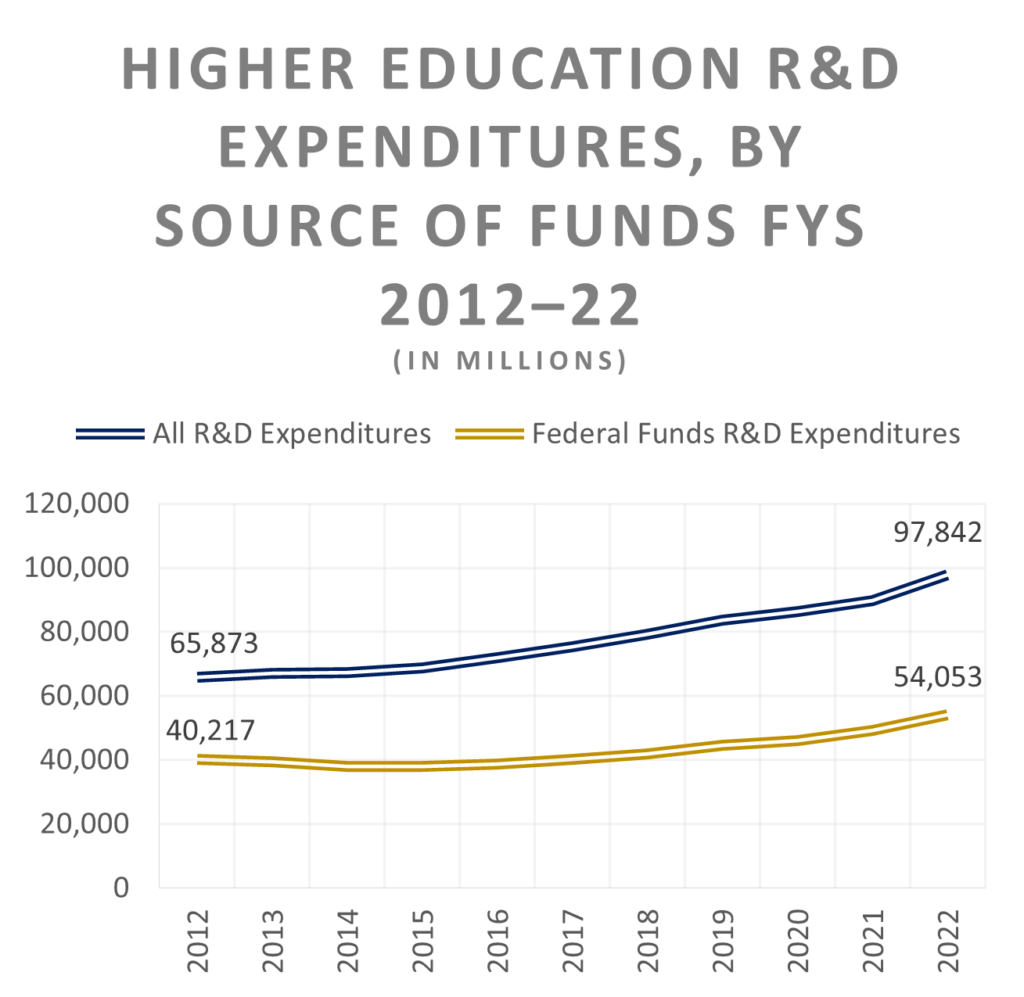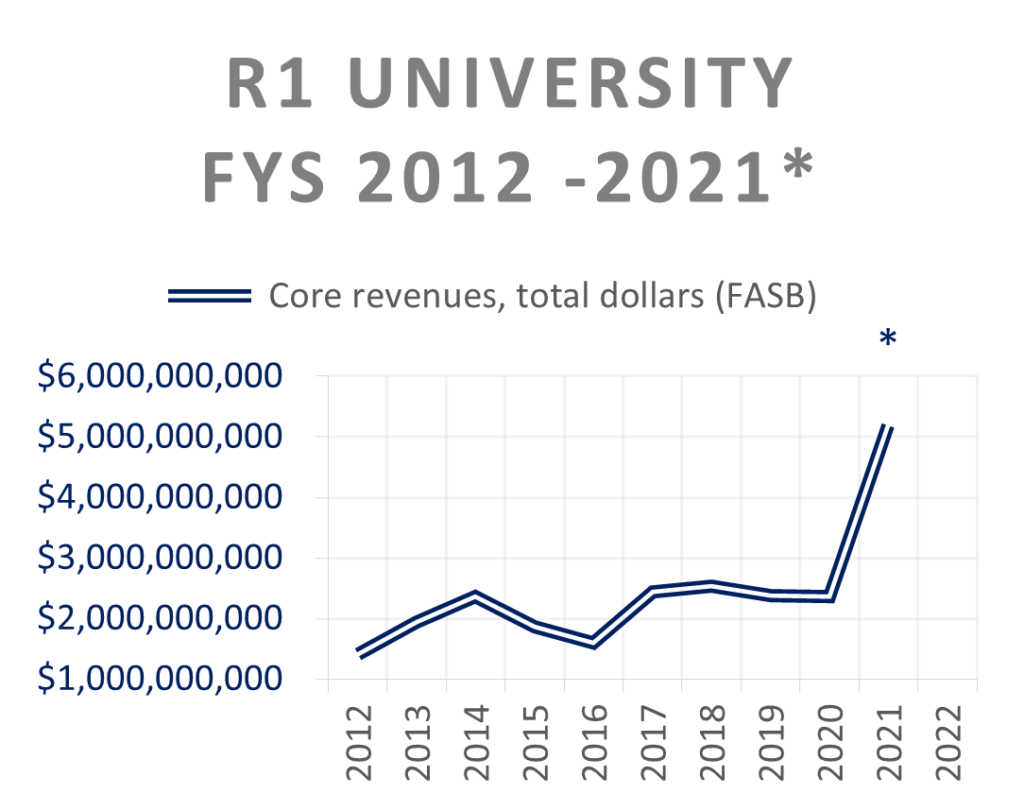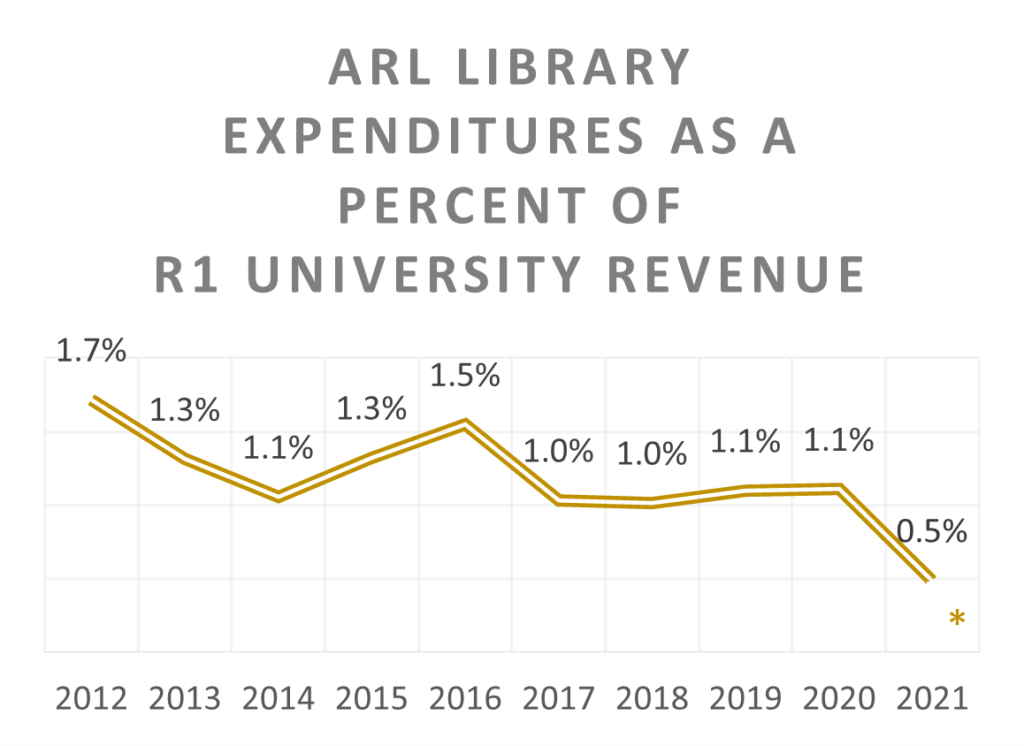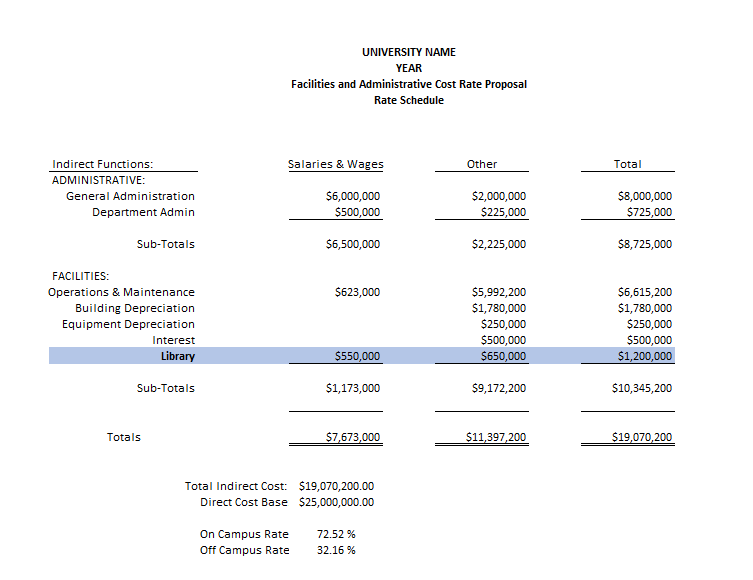Editor’s Note: Today’s post is by Hilary Craiglow. Hilary leads library consulting at Attain Partners, a higher education consulting firm. In her role, she oversees the Library Cost Study and is undertaking a review of its methodology and implementation procedures.
The federal government is rightly mandating that the knowledge and data produced from federal grants be widely available for our collective good. Despite the heroic efforts of the scholarly communication community, we remain under-resourced to make this happen. Let’s add some new metrics and language to this narrative to help articulate the value of libraries.
Within this community, there is an imperative, there is a will, and there is expertise to make scholarship and data, especially federally sponsored research, more accessible. But we remain challenged to turn the will and expertise into dollars to support the work. Federal research dollars continue to flow to universities but there are few budget increases to the libraries that make the resulting research accessible. To make the long-lived open scholarship work of research libraries more legible to university administrators and demonstrate that libraries are more than buildings for study, gathering, and warehousing, we can show impact in quantifiable and financial terms. We can gather and analyze data on a library’s impact on sponsored research itself. We can do this by conducting studies on the purpose of library use and tying that information to library expenses.
Federal Research Dollars to Universities
In November, the National Center for Science and Engineering Statistics (NCSES) released a brief outlying Government R&D Expenditures at U.S. Universities Increased by $8 Billion in FY 2022. University spending on R&D totaled $97.8 Billion in 2022. University research funds come from multiple sources, federal, state, and local agencies, businesses, non-profits, and other revenues from within the institution. According to the NCSES data, expenditures of federal research funding at U.S. institutions of higher education have increased 26% since 2012. Even with rumblings that federal R&D funding will decrease, this is a striking reminder of how the federal government relies on universities to help solve our most pressing problems.

Library Support for Research Grants
Universities understand how integral the library is to this research enterprise. At a high level, research libraries support PIs and research teams all along the research lifecycle through
- Access to Data, Resources & Specialized Collections
- Statistical Tools and Software
- Research Methods and Skills
- Proposal Development & Grant Support
- Data Curation and Management
- Reference and Citation Management
- Copyright and Intellectual Property Expertise
- Digital Publishing
- Archiving and Preservation
And Contemplative and Collaborative Spaces
Indirect Cost Recovery for Sponsored Research
Tangible evidence of a university’s recognition of the library’s support of sponsored research is embedded in a university’s Facility and Administrative (F&A) rate. This is the rate universities negotiate with the federal government to recover overhead costs that support research activities. Depending on multiple factors, a university’s indirect cost recovery on federal grants and contracts ranges between 25 and 33 percent. For example, if a scientist receives an award for $100,000, and the institution’s F&A rate is 50 percent, the amount of the award given to the organization is $150,000. So, $100,000 is for the direct costs needed for the scientist to conduct the research and the $50,000 is for the reimbursement of overhead costs that support the research. In this scenario, $50,000 represents 33 percent of the total award. Within the 50 percent F&A rate, the library component (i.e., facility) usually accounts for 1 to 3 of those points. To translate, for every $100 Million in federal grant funding received, one point equals $1 Million in recovery costs. To do a back-of-the-envelope calculation for any given institution, federal grant dollars by institution can be found in a variety of places, including the Higher Education Research and Development (HERD) Survey.
The library is a central component, one of just five components, in the Facilities portion of an F&A rate proposal. The other overhead costs include the depreciation on the building and equipment, interest expense, and operations and maintenance costs (utilities, maintenance and repairs, environmental health and safety, security, etc.).
Positioned within “Facilities”, the federal government has yet to recognize the depth and breadth of research libraries and their dynamic role in support of the research enterprise. From the perspective of university finance, libraries remain a facility. Further, for many university libraries, the library contribution to an F&A rate is proposed, negotiated, and recovered with little involvement or even knowledge by the library.
Library Budgets and University Revenues
Over the past ten years, Carnegie Doctoral Institutions with Very High Research Activity (R1) have received a significant portion of federal grant dollars. Although the unusual infusion of COVID research dollars will skew trends for years, on average, university revenues from all funding sources, have increased over the past ten years.

Source: Integrated Postsecondary Education Data System (IPEDS) Average Carnegie Doctoral Institutions with Very High Research Activity 2012 – 2021 n=147
During the same period of growth in university revenues, much attributed to R&D dollars, university investments in their libraries has remained around 1% of revenue. In good news, through unpredictable fluctuations in university revenues, an ARL library budget remains consistent. Unfortunately, with continuing cost increases, a flat library budget is an erosion in purchasing power. Without new investments, or substantial resource redistribution, we cannot make progress on new mandates for open data and scholarship.

Source: Integrated Postsecondary Education Data System (IPEDS) Average Carnegie Doctoral Institutions with Very High Research Activity 2012 – 2021, n=147; Association of Research Libraries (ARL) Historical Statistics, 2012 – 2021, U.S. research libraries n=102.
Research Libraries and U.S. Office of Management and Budget (OMB)
The federal government continues its flow of funds to universities to discover new knowledge and is mandating transparency in their research and output. The Nelson Memo makes clear and accelerates the open scholarship work research libraries have been conducting for decades. Many thanks to this community and university library leaders who tirelessly underscore this work (ACRL/ARL and Ivy Plus Libraries Confederation) and remind us of the necessary resources to make sponsored research and data open. Libraries have been at the forefront and are fundamental in distributing and providing access to the data and knowledge results of sponsored research. Yet, libraries are not receiving new funding to respond to the mandate. Interestingly, however, the expenses of running a library facility are recognized as an essential cost of conducting sponsored research.
Academic research communities are justly taking a closer look at how the government considers libraries in the indirect cost recovery process, a process governed by the Office of Management and Budget (OMB) and outlined in 2 CFR Part 200. There have been some the efforts, for example the comment letters from COGR and ARL, to reposition the research library in a 21st-century light. Notwithstanding these efforts, the federal government made no changes to the library treatment in recent updates to the indirect cost recovery process. Rather, recent changes were intended to decrease burdens on recipients, advance equity, and job growth, improve administrative assistance, and write the code in more plain language.
On the bright side, facilities expenses are uncapped. Uncapped expenses provide universities, and perhaps libraries, with more opportunities to increase their recovery of the costs to support their sponsored research activities.
Making the Library Ledger More Legible
In addition to quantifying the cost of the library facility, imagine what we could accomplish if we articulate in financial terms the impact libraries make all along the research lifecycle. We can find new, different, and effective ways to communicate the financial benefits, monetary support, and economic impact libraries provide to the university, especially the research enterprise. Doing so has the potential to increase library funding, help universities articulate the value they provide, and explain the rising expense of higher education.
Libraries can start by better incorporating our support for sponsored research into grant proposals. They can partner with investigators to develop data management and sharing plans and ensure library contributions are captured on a project-by-project basis. And we can collect data on how PIs utilize the library for their grant work. A library purpose-of-use study identifies researcher interaction and utilization of libraries at the point of use. Through a use study, they can tie library costs of providing library services, data, and tools to sponsored research use and work with and support university finance offices as they incorporate library costs into their F&A proposals. Publishers may have no direct role in supporting such a study, but they should be aware of the importance and value of such work in supporting the library’s budget case.
Libraries and publishers can also support the work of the Realities of Academic Research Sharing (RADS) Initiativewhich is diligently making progress on understanding the costs of implementing federally mandated public access to data. We should all be excited to see progress on their insights and recommendations (here is a recent peek).
Inevitably, with a pecuniary articulation of library support on campus, particularly support of sponsored research, we will further demonstrate the knowledge and authority of the library and open publishing community to continue our work and its true value: to help solve our most pressing problems.
Discussion
4 Thoughts on "Guest Post — Speak Finance: Gain University Support for Open Scholarship"
Thanks for this interesting post, Hilary, and for highlighting the RADS project—news to me and I look forward to seeing what comes out of this. One overall thought here, though, is that it may be (or very likely is) expecting too much for libraries to become deeply involved in data. There are plenty of other selling points— for example, that libraries need more funding to help train, incubate, and provide the infrastructure backbone for a new generation of research information management professionals, focusing on roles like access, archiving, connecting, discovery, and integration.
But data is like ivy. It looks like a pretty plant, but when you yank on it the roots go halfway across your yard, over your fence, and into your neighbor’s yard. Data management for clinical research projects (which at many R1s are the biggest chunk of federal funding) is a vastly complex undertaking, requiring teams of gardeners—subject matter experts, programmers, statisticians, managers, and funders. Multiply this by a thousand or more to oversee a university full of research projects and the staffing requirements alone far outstrip what can realistically be managed by a centralized resource like a library. As if this isn’t complicated enough, a lot of this data is also off-limits to all but study team staff due to privacy regulations, funding agreements (a lot of this research is funded through federal-industry partnerships), and sound science methodology—data shouldn’t be released until its ready to publish (which can be years after a study is finished). And even after the fact, getting “access” to this data is only half the battle; correctly interpreting it is also key. And making this data more usable/comparable is another battle still, beyond the ability of not only the library but most study teams as well.
In short, libraries can do a whole lot more and I hope you succeed in your effort to convince the world of this. But I would be wary of proposing that libraries, at least as currently funded and constructed, will be able to manage the future of data, too. Archiving? Access? Sure, maybe (as long as you don’t promise to archive datasets from physics and genetics researchers). These are critical functions. But your RADS study will reveal more. It will be interesting to see exactly how libraries can/should fit into this effort.
Thanks again and good luck!
This (research data in the libraries) is precisely what the faculty at Duke have advocated multiple times over the past decade as a central, university wide program and partnership. We have been building up a team of data science professionals and librarians to consult, instruct, and partner on data curation, research data management, data visualization, data publishing, data preservation, and open scholarship. We have also invested in applications developers and product ownership to develop a research data publishing and archives repository that can fill the needs for researchers that cannot be filled elsewhere. Investing in communities like the Data Curation Network extend our resources and influence for this opportunity and challenge to make research more accessible.
Yes, there is nuance, complexity, and scale to be reckoned with in certain disciplines, but that that is all the more reason for libraries to develop the core, centralized services as a foundation to all disciplines. These partnerships boost the opportunity for research universities to increase their overall research revenue, making the library investment smart for good ROI.
This is awesome Tim—thanks for sharing this information. I’ll read up on the DCN. What kind of inroads have you been able to make at Duke so far (e.g., is your team fully deployed and churning out work)?
This is a very interesting post because libraries play an important role in the research lifecycle especially their support in research enterprises. Unlike the US as mentioned by Hilary: Federal research dollars continue to flow to universities but there are few budget increases to the libraries that make the resulting research accessible but the situation is quite different in developing countries. For example, there is no grant coming from the government and it is unfortunate too that the majority if not all the universities in Nigeria invest a stipend of their growing revenues in libraries. Having this in mind will make it more difficult to have scholarships and data more accessible in our libraries.



